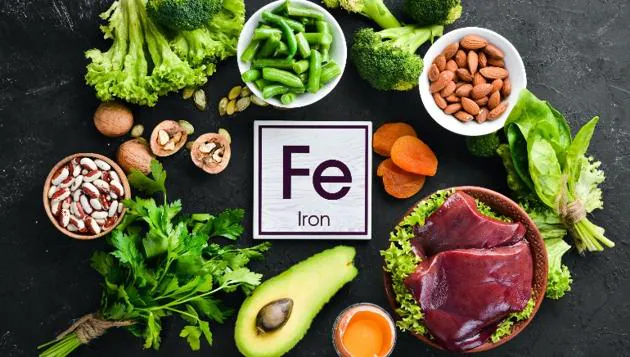Five Methods To Increase Iron Absorption
A. Increase the amount of vitamin C-rich foods in your child’s daily diet, such as citrus fruits, lemons, amla, tomatoes, berries, kiwi fruit, melons, green leafy vegetables, and capsicum. Vitamin C aids in the body’s improved absorption of iron.
Quick Tip: Add a spoonful of lemon juice to a bowl of dal. Amla chutney can also be served with filled chapati or paratha.
B. Since they can impair a child’s ability to absorb iron, coffee, tea, and red wine (both alcoholic and non-alcoholic) should not be given to kids. Caffeine, tannins, and polyphenols—found in coffee, tea, and red wine—all limit the absorption of iron.
Quick tip: Drink tea and coffee at least 30 minutes before or after meals, or avoid consuming them altogether. Red wine should not be consumed with appetisers and should instead be consumed 30 minutes later. Avoid drinking tea, coffee, or alcohol right before a large meal.

C. Since they are positively charged, zinc, copper, magnesium, and calcium should not be consumed in excess.
They therefore block iron from attaching to and absorbing because they have the same binding site as iron.
Read More: Benefits of Yoga: Include it in Your Daily Routine to Keep Yourself Fit.
Quick Tip: Use caution while doling out multivitamins to your children. Contact a dietician or your doctor first.
D. Since calcium and phosphorus-rich snacks also impede the absorption of non-heme iron, avoid eating non-heme iron-rich meals with them.
Quick Tip: Milk is a poor source of iron, so limit your child’s intake of it. A youngster that consumes too much milk may develop an iron deficit.
E. Oxalates make it harder for non-heme iron to be absorbed. Foods including spinach, kale, beets, almonds, chocolate, tea, and herbs like oregano, basil, and parsley contain oxalates, which are chemicals made from oxalic acid.
Quick Tip: Cook these veggies before eating to minimise their oxalate level, which, depending on the produce, is reduced from 30% to practically 90%.
Iron-Rich Foods
- The amanita
- Bajra
- Barley
- Jowar
- Ragi
- RICE FEEL
- Samai
- Lentils
- Soybean
- Leaves of the amanth
- Green beets
- Apricot
- Dates
- Raisins
- Tomato Pulp
- Lupin root, Etc.
Age-Appropriate Needs For Iron

- Infants often have a lot of iron reserves when they are born.
- For the first six months of breastfeeding, an uninterrupted and sufficient iron supply from breast milk is guaranteed.
- Iron sufficiency begins to pose a problem for infants as they reach 6 months old, a time of rapid development and the introduction of solid foods.
- It is recommended to start newborns out on iron-fortified diets since these assist avoid anaemia in young children.
- Include foods high in vitamin C, such as oranges, tomatoes, etc., in your child’s regular diet to improve iron absorption.
- The quantity of iron needed during childhood must account for basal loss, growth, and a rise in haemoglobin concentration.
- The requirements for growth in growing children must be understood in relation to the demands for the expansion of blood volume, lean muscle mass, and for increasing body iron reserves.
- As females reach menarche in their tweens and teens, they require more iron, one of the vital elements (first menstrual bleeding).
- Moreover, the need for iron is increased by menstrual blood loss.
- Youth athletes may require more iron in their diets since they tend to lose more iron when they routinely participate in strenuous and intensive activity.
- Anemia, or a lack of iron, can result from not meeting these demands on time.
-
Read More: Conquer Your Inner Critic: 5 Ways to Deal with Feelings Not Good Enough.








